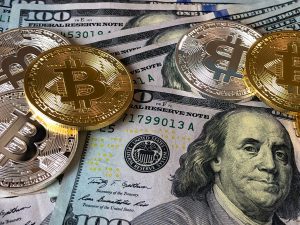The United States has long been regarded as a financial powerhouse, with its government bonds considered one of the safest investments globally. However, the recent surge in borrowing by the US government has raised concerns among analysts about potential market strains. This article delves into the factors contributing to the US borrowing binge, the risks it poses to the market, and the potential long-term implications for the economy.
The Scale of US Borrowing

Over the past few years, the US federal government has significantly increased its borrowing to fund various initiatives, including pandemic relief measures, infrastructure projects, and social programs. As of 2024, the national debt stands at a staggering $33 trillion, a substantial increase from previous years. This borrowing spree is fueled by both political priorities and economic necessities, but it has raised alarms among economists and market analysts.
Drivers of the Borrowing Surge
Pandemic-Related Expenditures
The COVID-19 pandemic prompted unprecedented fiscal stimulus measures to support businesses and individuals. The CARES Act, the American Rescue Plan, and other relief packages collectively added trillions to the national debt. While these measures were deemed necessary to prevent economic collapse, they have significantly increased the government’s borrowing requirements.
Infrastructure Investment
The Biden administration’s ambitious infrastructure plan aims to modernize America’s aging infrastructure, including roads, bridges, and public transit systems. This initiative, while necessary for long-term economic growth, requires substantial funding, further contributing to the borrowing surge.
Social Spending
In addition to infrastructure, increased spending on social programs such as healthcare, education, and social security has also driven up borrowing. These programs are designed to address long-standing socio-economic issues, but their funding relies heavily on government debt.
Risks to the Market
Rising Interest Rates
One of the primary concerns associated with the increased borrowing is the potential for rising interest rates. As the government issues more bonds to finance its debt, it could lead to higher yields to attract investors. Higher interest rates can increase the cost of borrowing for businesses and consumers, potentially slowing down economic growth.
Inflationary Pressures
Another significant risk is the potential for inflation. Increased government spending can lead to higher demand for goods and services, pushing up prices. If inflation rises too quickly, it could erode purchasing power and lead to a tightening of monetary policy by the Federal Reserve, which could negatively impact the stock market and economic growth.
Debt Sustainability
The sustainability of the national debt is a growing concern. As the debt-to-GDP ratio increases, questions arise about the government’s ability to service its debt without resorting to austerity measures or drastic cuts in spending. High debt levels can also limit the government’s ability to respond to future economic crises.
Market Implications
Bond Market Volatility
The surge in borrowing has already led to increased volatility in the bond market. Investors are becoming wary of the growing supply of government bonds, which could lead to fluctuations in bond prices and yields. This volatility can affect the broader financial markets, including equities and real estate.
Foreign Investor Sentiment
The US government relies heavily on foreign investors to purchase its bonds. However, concerns about the sustainability of US debt could lead to a decrease in foreign investment. If major foreign holders of US debt, such as China and Japan, reduce their purchases, it could lead to higher interest rates and increased borrowing costs for the US government.
Impact on the Dollar
The borrowing binge could also impact the value of the US dollar. If investors lose confidence in the US government’s ability to manage its debt, it could lead to a depreciation of the dollar. A weaker dollar can have mixed effects, such as making US exports more competitive but increasing the cost of imports and potentially leading to inflation.
Long-Term Economic Implications
Slower Economic Growth
High levels of debt can crowd out private investment, as government borrowing competes with businesses for available capital. This can lead to slower economic growth over the long term. Additionally, higher interest rates can increase the cost of borrowing for businesses, further dampening investment and innovation.
Fiscal Policy Constraints
As debt levels rise, the government’s ability to implement effective fiscal policy becomes constrained. Future administrations may face difficult choices between servicing debt and funding essential programs. This can limit the government’s flexibility in responding to economic downturns and other crises.
Intergenerational Equity
The burden of repaying the national debt falls on future generations. High levels of debt can lead to increased taxes and reduced public services for future taxpayers. This raises concerns about intergenerational equity and the long-term sustainability of current fiscal policies.
Analysis Table: Key Factors Contributing to US Borrowing
| Factor | Description |
|---|---|
| Pandemic Relief Measures | Trillions spent on stimulus packages to support the economy during COVID-19. |
| Infrastructure Investment | Significant funding for modernizing infrastructure. |
| Social Program Spending | Increased spending on healthcare, education, and social security. |
| Political Priorities | Legislative decisions driving higher spending. |
| Economic Necessities | Need to support economic growth and stability. |
Comparative Table: Risks vs. Implications of US Borrowing Binge
| Risks | Implications |
|---|---|
| Rising Interest Rates | Higher borrowing costs for businesses and consumers. |
| Inflationary Pressures | Potential for eroded purchasing power and monetary policy tightening. |
| Debt Sustainability Concerns | Questions about the government’s ability to service debt long-term. |
| Bond Market Volatility | Increased fluctuations in bond prices and yields. |
| Decreased Foreign Investment | Higher interest rates and borrowing costs if foreign demand drops. |
| Impact on US Dollar | Potential depreciation affecting trade balance and inflation. |
| Slower Economic Growth | Crowding out of private investment and higher borrowing costs. |
| Fiscal Policy Constraints | Limited ability to implement effective fiscal policies in the future. |
| Intergenerational Equity Issues | Increased tax burden and reduced public services for future generations. |
Conclusion
The US borrowing binge, driven by pandemic relief measures, infrastructure investment, and social spending, poses significant risks to the market and the broader economy. Rising interest rates, inflationary pressures, and concerns about debt sustainability are some of the primary risks identified by analysts. The implications of this borrowing surge are far-reaching, affecting everything from bond market volatility to the value of the US dollar and long-term economic growth











